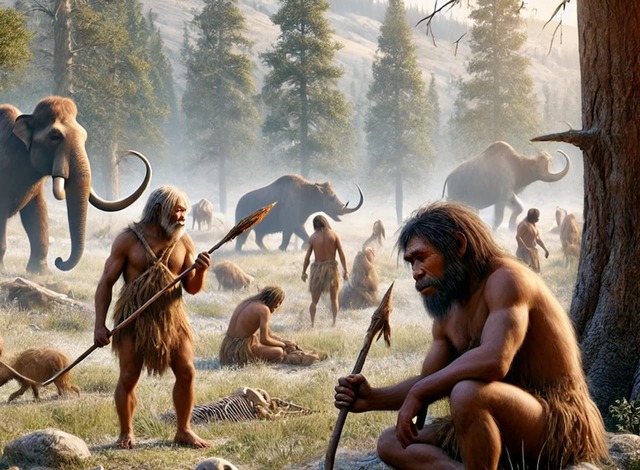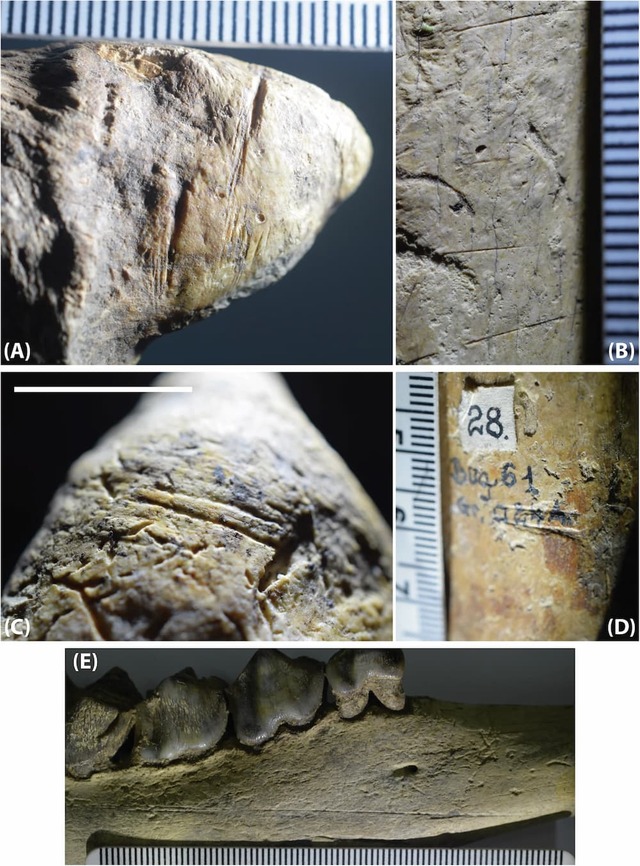For decades, the earliest confirmed presence of hominins outside Africa was linked to Dmanisi, Georgia, dated to approximately 1.8 million years ago. However, a groundbreaking discovery at Grăunceanu, Romania, now pushes that timeline even further back, suggesting that hominins roamed Europe at least 1.95 million years ago. This remarkable finding, published in Nature Communications, offers fresh insights into early human migration, tool use, and survival strategies in an ancient European landscape.
A Remarkable Discovery: The Grăunceanu Site
A Hidden Treasure in the Olteț River Valley
The Grăunceanu archaeological site, situated in the Olteț River valley, Romania, has emerged as one of the best-dated Early Pleistocene sites in Europe. It belongs to the Tetoiu Formation, a fluvio-lacustrine sedimentary sequence that has preserved an exceptional array of fossils from the Late Villafranchian period (~2.2 to 1.9 million years ago). This ecosystem, characterized by a wooded steppe environment, supported a diverse range of megafauna, including mammoths, equids, ruminants, rhinoceroses, and even ostriches.

However, what truly makes Grăunceanu significant is the discovery of animal bones bearing cut marks, definitive evidence that early hominins hunted, processed meat, and used tools at the site nearly two million years ago.

Video
Check out the video to learn about the oldest hominins discovered in Europe, rewriting history as we know it. This discovery is truly groundbreaking!
Cut Marks: Traces of Ancient Butchery
Archaeologists identified over 4,983 fossil specimens at Grăunceanu, of which 1,189 displayed linear modifications. Out of these, 20 bones bore high-confidence cut marks, which experts attribute to butchery activities. These marks—found on tibias and mandibles of artiodactyls (even-toed ungulates)—are consistent with patterns observed at contemporary African sites where early humans processed carcasses using stone tools.
To confirm their anthropogenic origin, researchers ruled out natural processes such as predator teeth marks, trampling, or weathering. By using high-resolution imaging and taphonomic analysis, they verified that the cut marks resulted from hominin tool use, reinforcing the evidence of human activity at this site.
The Climate and Ecosystem of Early Hominins in Romania
One of the key aspects of this study was the isotopic analysis of horse teeth found at Grăunceanu. By examining oxygen and carbon isotopes, scientists inferred that the region experienced moderate temperatures with distinct wet and dry seasons—wet winters and dry summers. This suggests that early hominins may have thrived in a seasonal climate, adapting to both food scarcity and environmental fluctuations.
Unlike the warm and stable environments of Africa, the Carpathian region at 45° latitude presented a harsher, more unpredictable setting. Surviving in this ecosystem would have required advanced cognitive abilities, including seasonal planning, tool-making skills, and the ability to exploit diverse food sources. This underscores the resilience and adaptability of early hominins.
Expanding the Timeline of Hominin Migration
Previously, the Dmanisi site in Georgia (~1.8 million years ago) was the earliest known hominin settlement in Eurasia. However, the 1.95-million-year-old evidence from Grăunceanu challenges this narrative, suggesting that hominins may have migrated into Europe even earlier than previously believed.
For decades, researchers assumed that early hominins exited Africa via the Sinai corridor, gradually dispersing across Eurasia. However, the discovery at Grăunceanu suggests that these migrations may have been more sporadic, potentially influenced by climate shifts and interglacial periods.
This raises intriguing questions:
- Did hominins reach Eastern Europe via an alternate northern route?
- Were they highly mobile hunter-gatherers, moving in small groups across vast distances?
- Did multiple waves of migration occur, rather than a single, linear expansion?
While these questions remain unanswered, one thing is clear: early hominin dispersal was more complex than previously assumed.
The Missing Puzzle Pieces: Challenges and Future Research

The Mystery of the Hominins at Grăunceanu
Despite the compelling evidence of hominin activity, researchers have yet to uncover direct fossil remains of the individuals responsible for the cut marks. Unlike Dmanisi—where a rich collection of hominin skulls and bones were found—Grăunceanu currently lacks human skeletal evidence.
Similarly, no in-situ lithic tools have been discovered. This absence could be due to:
- Natural erosion or sediment displacement, which may have buried or destroyed artifacts.
- The use of perishable materials (e.g., wooden tools or organic adhesives), which left no trace in the fossil record.
- Limited excavation efforts, meaning further discoveries could still be waiting beneath the surface.
The Need for More Research in Eastern Europe
The discovery at Grăunceanu highlights the need for further exploration in underrepresented regions, such as Eastern Europe and Central Asia. Historically, most paleoanthropological research has focused on Africa, the Middle East, and parts of Asia, leaving vast areas of Europe largely unexplored.
Future investigations using advanced dating techniques, isotopic analysis, and high-resolution imaging could:
- Uncover new hominin fossils that clarify which species occupied Grăunceanu.
- Identify additional migration routes and connections between ancient populations.
- Provide a more detailed picture of hominin adaptation to diverse environments.
Conclusion: A New Chapter in Human History
The discovery at Grăunceanu marks a significant breakthrough in paleoanthropology, reshaping our understanding of early human migration. This site—now confirmed as one of the oldest hominin settlements in Europe—challenges previous assumptions and raises new questions about how, when, and why early humans spread across the globe.
With further excavations and scientific advancements, we may soon uncover even older traces of our ancient ancestors, revealing untold stories of survival, ingenuity, and resilience. One thing is certain: the journey of human evolution is far from fully written.
Video
Watch the video to discover the 5 largest golden treasure-filled jars ever found. These incredible discoveries will leave you in awe!



